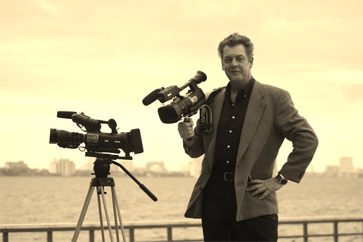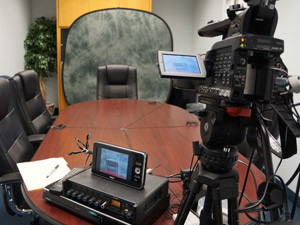Why Legal Videography Is Vital for Modern Lawsuits Processes
Why Legal Videography Is Vital for Modern Lawsuits Processes
Blog Article
Key Benefits of Utilizing Videography in Legal Cases
The combination of videography in lawful instances presents a series of calculated advantages that can dramatically influence trial outcomes. By improving evidence presentation and boosting witness credibility, videography serves as an effective device to involve jurors and share intricate narratives effectively. This tool protects vital testaments, making certain that vital details is not shed to memory decay. As the legal landscape proceeds to develop, the ramifications of leveraging videography in trial settings advantage more detailed evaluation, especially in recognizing just how these benefits convert right into tangible lead to the courtroom.
Boosted Evidence Presentation
Boosted evidence presentation through videography has actually changed the means lawful cases are suggested and recognized in the court. By integrating high-grade video recordings right into legal process, attorneys can convey intricate details in a much more comprehensible and interesting manner - Legal Videography. Videography permits the visualization of proof, making it much easier for courts and courts to understand the context and value of the presented realities
Along with boosting clearness, videography can additionally capture real-time occasions, providing an authentic representation of occurrences relevant to a situation. This immediacy can considerably influence the persuasiveness of a debate, as aesthetic evidence commonly reverberates more strongly than written documents. Furthermore, video clip proof can consist of essential aspects such as body movement, tone of voice, and environmental factors, every one of which add to a more holistic understanding of the situation.
Making use of videography likewise permits efficient organization of proof, making it possible for attorneys to provide their arguments in a rational and meaningful manner. By tactically including video clip right into their presentations, attorneys can assist in a much more reliable evaluation of the proof, ultimately causing notified decision-making by the court. The transformative power of videography in legal contexts is both indisputable and vital.
Better Witness Credibility

Video clip evidence can also alleviate potential prejudices that may occur from the witness's look or quirks in an online setting. By providing a well-produced video, lawful groups can make sure that the emphasis stays on the material of the statement instead than extraneous aspects that may threaten reliability. The opportunity to assess recorded statements can fortify witness consistency, as inconsistencies can be addressed prior to test, leading to more trustworthy testimonies.
Additionally, the permanence of videography provides a safeguard against memory degeneration or misconception gradually. By having a clear, verifiable account of witness statements, legal practitioners can build a stronger case, enhancing the total credibility of the witness and, subsequently, the integrity of the judicial process.
Engaging Court Experience
Videography can dramatically elevate the jury's interaction throughout legal proceedings. By integrating high-grade video presentations, lawful groups can record and maintain the focus of jurors, changing complicated details right into visually compelling stories. This interaction is vital, as jurors usually struggle to soak up dense legal terms and detailed details provided solely through traditional methods.
Video evidence allows jurors to witness occasions as they unfolded, providing context that written testimonies might lack. The usage of dynamic visuals can stimulate emotional reactions, making the case a lot more unforgettable and relatable. As an example, monitoring footage or reenactments can illustrate crucial moments, making it possible for jurors to imagine the proof in a compelling way.
Moreover, videography can help with a much more interactive more information experience. Jurors can see and listen to witnesses, which includes a layer of authenticity and immediacy that created transcripts can not reproduce. This multi-sensory technique promotes deeper understanding and retention of today product.

Effective Instance Storytelling
Videography serves as an effective tool to offer this narrative and craft, involving the jury and boosting their understanding of the case. By aesthetically depicting the occasions leading to the lawful conflict, videography permits attorneys to highlight intricate situations in a relatable and clear way.
Including components such as witness interviews, animations, and restorations, videography offers a multi-dimensional viewpoint that standard approaches can not achieve - Legal Videography. This graph not only help in clearing up realities but likewise helps jurors keep important information. In addition, the dynamic nature of video can damage down obstacles of comprehension, making elaborate details more available.
Eventually, efficient situation narration via videography transforms the court room experience, allowing attorneys to offer their arguments in a compelling and convincing fashion. By utilizing the power of visuals, attorneys can significantly boost their ability to interact essential narratives and achieve beneficial results for their clients.
Preservation of Testimonies
Protecting testimonies is an essential aspect of lawful proceedings, as the accuracy and stability of witness statements can substantially influence the outcome of a situation. Videography works as a reliable device in this regard, making sure that statements are videotaped in their initial context, consequently minimizing the risk of misconception or distortion in time.
By recording non-verbal and verbal signs, videography provides a comprehensive account of witness declarations, which can be vital during trial process. This technique not just documents the material of the testimony yet likewise preserves the attitude and emotional feedbacks of witnesses, sites providing courts a richer understanding of the testimony's reputation and relevance.
Moreover, making use of videography promotes a much more trusted evaluation of statements throughout pre-trial preparations or post-trial evaluations. Attorneys can revisit tape-recorded declarations to clear up information, assess incongruities, or establish strategies for cross-examination.
Essentially, videography boosts the preservation of testaments, fostering a clear lawful procedure that can result in even more fair results. By securing the stability of witness declarations, legal experts can better promote for their customers and copyright the principles of justice.

Final Thought
In conclusion, the assimilation of videography in lawful instances dramatically improves the discussion of proof, bolsters witness integrity, and captivates courts via engaging visual web content. Jointly, these benefits underscore the essential duty of videography in contemporary lawful methods, ultimately contributing to more educated judicial results.
The combination of videography in legal situations provides a range of calculated benefits that can substantially affect test end results.Boosted evidence presentation with videography has actually reinvented the means legal cases are suggested and comprehended in the court room.Videography can considerably elevate the jury's engagement throughout lawful process. By visually portraying the occasions leading to the lawful disagreement, videography try this enables lawyers to illustrate intricate scenarios in a clear and relatable way.In verdict, the assimilation of videography in legal instances dramatically improves the presentation of evidence, strengthens witness trustworthiness, and mesmerizes juries via engaging visual content.
Report this page